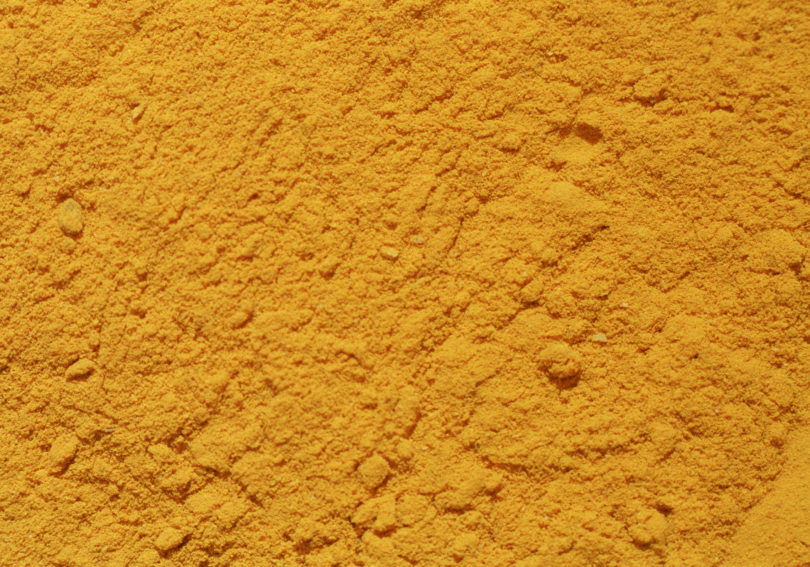9 Things You Never Knew About Chronic Pain
9 Things You Never Knew About Chronic Pain
A throbbing head, a crick in the neck, allover muscle tension. Chances are you’re no stranger to these kinds of everyday aches and pains. One in four Americans say they’ve had a bout of pain that has lasted more than a day, according to the Centers for Disease Control and Prevention. But, fortunately, there’s plenty you can do besides pop ibuprofen to work out the kinks so a sore back or a bum shoulder doesn’t slow you down. There are even lifestyle moves that make a difference. Here’s what you need to know to ward off pain—and feel better if you’re already hurting.
Women are more prone to pain
Women report feeling more intense physical discomfort from almost every kind of ailment—whether an ankle sprain or diabetes—says a study from Stanford University. Experts aren’t clear on why, but research suggests that a mix of hormonal, genetic, immune response, and psychological factors are involved.
Research from the University of Michigan, for example, has found that fluctuating estrogen levels during a woman’s menstrual cycle may play a role. When the hormone drops, so do pain-dampening endorphins, making the body less able to handle discomfort.
Another theory points to cultural expectations: “We know that men are often compelled by stereotypes to act tough and manly,” says Roger Fillingim, PhD, director of the UF Pain Research and Intervention Center of Excellence at the University of Florida. “So they may be reporting less pain than they really feel. By the same token, women may be encouraged to report pain.”
Rest is not always best
Back spasming? Shoulder aching? Your instinct may be to move as little as possible. But doctors actually now recommend the opposite for minor muscle aches and joint pain. “We often tell patients to resume normal activities—including exercise—as soon as possible,” says Jennifer Solomon, MD, a physiatrist at the Hospital for Special Surgery in New York City. Research supports the advice: One review found that people with lower back pain who were advised to stay active had less pain and better function than people told to take it easy.
You may also want to ask your doc about a strength-training program or course of physical therapy for the part that ails you. A 2015 study found that the sooner people got PT for lower back pain, the less likely they were to receive surgery, spinal injections, or opioids later on.
Migraines worsen at this stage
As if mood swings and hot flashes weren’t enough, perimenopause seems to bring on more migraines as well. When researchers looked at 3,664 women with these hellish headaches, they found that the risk of having frequent head pounders rose by 62 percent during perimenopause. “Risk was highest at the later stage, when women have low levels of estrogen,” says lead study author Vincent Martin, MD, director of the Headache and Facial Pain Center at the University of Cincinnati Gardner Neuroscience Institute. The good news: Hormonal therapies, such as the birth control pill or an estrogen patch, may help, says Dr. Martin.
Some natural painkillers work
Acupuncture: Research shows that this technique, a staple of traditional Chinese medicine, may help reduce the frequency of tension headaches and relieve chronic pain in the lower back, neck, and knees.
Chiropractic: Chiropractic treatment involving spinal manipulation may work as well as conventional care for lower back pain for up to 18 months, per a study funded by the National Center for Complementary and Integrative Health (NCCIH). And a review of research found that the technique may be helpful for neck pain and migraines as well.
Yoga: Another study funded by the NCCIH revealed that people with chronic lower back pain who took up Iyengar yoga, a practice that focuses on proper alignment, experienced decreased discomfort and less disability after six months.
Massage: Not only does it feel amazing, but research has shown that this manual manipulation of muscles, ligaments, and tendons can help alleviate chronic lower back and neck pain, as well as knee pain from osteoarthritis.
Certain foods may help—or hurt
Cherry juice may help: Folks with knee osteoarthritis who drank eight ounces of tart cherry juice twice a day for six weeks had improvements in pain and function, per a 2013 study.
Sardines may help: These fatty fish (and others, like salmon, trout, tuna, and mackerel) are chock-full of omega-3 fatty acids, which help fight inflammation.
Olive oil may help: A study published in the journal Nature found that a compound in extra-virgin olive oil called oleocanthal has anti-inflammatory effects similar to those of ibuprofen.
Sugary drinks can hurt: Women who consume at least one sugary soda a day have a 63 percent greater chance of developing rheumatoid arthritis (RA) than those who don’t, according to a Harvard study.
Steak can hurt: Another Harvard study found that diets high in red and processed meat can increase the risk of RA—possibly because they trigger an inflammatory reaction inside the body.
Refined grains can hurt: People who ate the most refined grains had the highest levels of an inflammatory protein in the blood, revealed a study published in The Journal of Nutrition.
Rain might equal pain
A few common truths—and lies—about pain you should know.
The weather can affect your pain: Maybe. People with hip osteoarthritis reported increased pain and stiffness when humidity and barometric pressure rose, according to 2014 Dutch research. But a 2017 Australian study looking at lower back pain and knee osteoarthritis found no weather-related link.
Your heart health can impact your joints: Possibly true. A 2016 Australian animal study found that high cholesterol appears to cause the breakdown of cartilage cells—and may ultimately lead to osteoarthritis. The finding makes sense, since high cholesterol is connected to inflammation, which affects the joints.
Cracking your knuckles causes arthritis: False! Several studies on habitual knuckle crackers have found no evidence that the habit leads to a higher risk of osteoarthritis. That “pop” you hear is bubbles bursting in the synovial fluid that keeps joints lubricated. But there is one reason to cut back on cracking: Some research has linked it to swelling in the hands and decreased grip strength.
What to know about fibromyalgia
There’s no simple test for fibromyalgia, a common cause of musculoskeletal pain among women between 20 and 55. Doctors make the diagnosis based on a clinical exam: “One of the criteria is widespread pain throughout your body—meaning on both sides and/or above and below your waist—for at least three months,” says Houman Danesh, MD, director of integrative pain management at the Mount Sinai Hospital in New York City. First-line treatment is often lifestyle changes, like reducing stress and exercising regularly. Your doctor might also prescribe meds, such as antidepressants, to help ease pain and fatigue; antiseizure drugs, like pregabalin, may also be effective.
What to know about taking opioids
Opioid medications, like oxycodone and codeine, attach to opioid receptors in the brain and body to reduce the perception of pain. They can also produce feelings of euphoria and relaxation, and they can be highly addictive, warns addiction specialist Indra Cidambi, MD, medical director of the Center for Network Therapy in Middlesex, New Jersey. So take them only when you really need to, she advises—if you’re in crippling agony after an accident, say, or you just had major surgery. In general, limit your use of these drugs as much as possible: “Most of the time, for acute injuries, you don’t need it for more than a few days,” says Dr. Cidambi. If your doctor wants to give you an opioid for longer than a week, ask whether there are other options.
This article originally appeared on Health.com
Published at Tue, 04 Apr 2017 13:38:16 +0000



